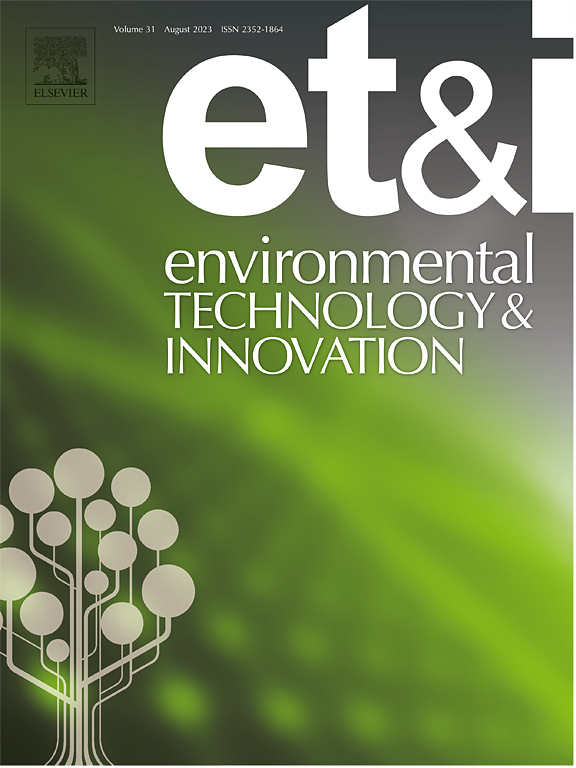Different film-mulching strategies alter soil biological characteristics and fungal and archaeal community structures under a drip fertigation system
IF 6.7
2区 环境科学与生态学
Q1 BIOTECHNOLOGY & APPLIED MICROBIOLOGY
引用次数: 0
Abstract
Soil microorganisms play a crucial role in ecosystem succession. Thus, understanding the responses of microbial communities during film mulching with drip fertigation is essential. This study employed high-throughput sequencing to evaluate soil biological characteristics and the community composition, diversity, and potential ecological functions of fungi and archaea in a semi-arid region under drip fertigation with the following film mulching treatments: drip irrigation without mulching (DI), polyurethane film mulching (PF), and biodegradable film mulching (DF).The biodegradable film used in this study was composed of maize-specific poly (propylene carbonate), high molecular weight polyester, chain extenders, and layered nanofillers. Results demonstrated that, compared to PF, DF significantly enhanced microbial biomass carbon (MBC) by 8.4 %, microbial biomass nitrogen (MBN) by 17.1 %, and basal respiration (BR) by 10.6 %. Both DF and PF significantly increased soil sucrase (S-SC) activity, while reducing soil laccase (SL) and catalase (S-CAT) activities. Specifically, compared to DI, DF increased S-SC by 13.7 % and PF increased it by 20.3 %. Moreover, DF and PF significantly altered the fungal and archaeal community compositions and diversity. Specifically, DF exhibited a lower Shannon index for both fungi and archaea compared to PF, with a reduced relative abundance of potentially pathogenic microorganisms (Fusarium, Leptosphaeria, Pseudomonas, and Acidovorax) and an increased relative abundance of potentially beneficial microorganisms (Powellomyces, Penicillium, and Methanosarcina). Structural equation modeling (SEM) revealed that soil pH and MBC were the primary drivers of fungal and archaeal community alterations, respectively. Network analysis further indicated that DF promoted more stable fungal co-occurrence networks, enhancing resistance to environmental perturbations, while fostering stronger species interactions within archaeal co-occurrence networks. This study highlights the pivotal role of biodegradable film mulching in optimizing soil ecological environments and promoting sustainable agriculture, providing scientific evidence for improved agricultural management strategies.
求助全文
约1分钟内获得全文
求助全文
来源期刊

Environmental Technology & Innovation
Environmental Science-General Environmental Science
CiteScore
14.00
自引率
4.20%
发文量
435
审稿时长
74 days
期刊介绍:
Environmental Technology & Innovation adopts a challenge-oriented approach to solutions by integrating natural sciences to promote a sustainable future. The journal aims to foster the creation and development of innovative products, technologies, and ideas that enhance the environment, with impacts across soil, air, water, and food in rural and urban areas.
As a platform for disseminating scientific evidence for environmental protection and sustainable development, the journal emphasizes fundamental science, methodologies, tools, techniques, and policy considerations. It emphasizes the importance of science and technology in environmental benefits, including smarter, cleaner technologies for environmental protection, more efficient resource processing methods, and the evidence supporting their effectiveness.
 求助内容:
求助内容: 应助结果提醒方式:
应助结果提醒方式:


